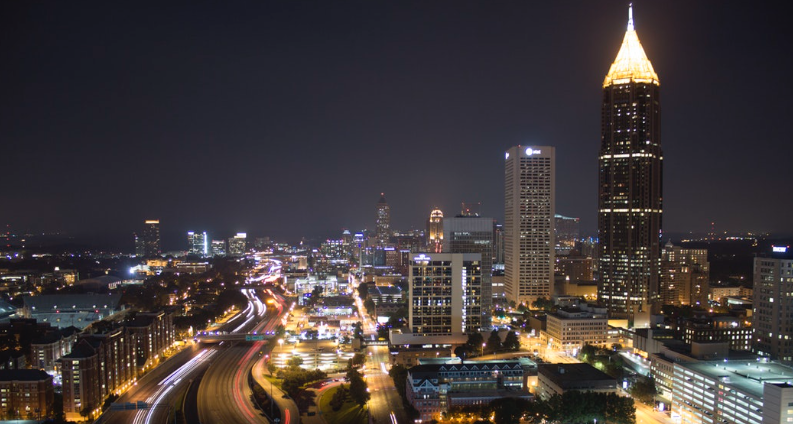
Real estate prices are increasing in Atlanta, ranking No. 7 of the top 10 highest-growth real estate markets.
Georgia State University President Mark Becker has garnered reputation as Downtown Atlanta’s savior. Under Becker’s presidency, neglected infrastructure has become a hub for Atlanta developers.
Dr. Jon Wiley, associate professor in the Department of Real Estate and holder of the Richard E. Bowers Professorship in Real Estate at Georgia State’s Robinson College of Business, says rising Atlanta real estate prices is “a story of supply and demand.”
“Atlanta is one of the markets going pretty quickly,” Wiley said. “There are a lot of young people moving to Atlanta because of job opportunity. Our employment growth and population growth are very strong. Supply is not increasing as much as it normally would historically, but you have these prices going up for everything that’s happening all over Atlanta.”
Spanning 10 years, developers have pumped $4 billion into Downtown Atlanta real estate with another $4 billion currently planned or under construction. Atlanta corporate behemoths such as Coca-Cola and UPS have helped don Atlanta as No.1 for corporate relocation. Though, in previous years, investors never gloated Downtown Atlanta’s real estate.
“Downtown Atlanta, historically, has not been a favorite spot of Atlanta price appreciation,” Wiley said. “People haven’t wanted to live in Downtown Atlanta. There was just a wave where everybody left the city and moved out to the suburbs and Downtown Atlanta became very neglected. Buildings became vacant. And we had a huge increase in crime and poverty and homelessness as a result of abandoning our city center.”
2017 police department crime data from 50 major American cities ranked Atlanta 17th most dangerous city in America according to homicides per 100,000 persons, though Atlanta homicides dropped from 2016. Nicole Gonzalez Van Cleve, a criminology expert and professor at Temple University in Philadelphia, told the magazine Patch that “dangerous city” rankings do not suggest Atlanta is crime-ridden.
“Major American cities with high levels of segregation, poverty and inequality will often see high rates of violence,” Van Cleve said. “But crime statistics and rankings don’t paint an accurate picture of where that violence actually happens. Violence is concentrated within communities, and individual blocks within neighborhoods see vastly different levels of violence than others.”
Yet, Downtown Atlanta has witnessed a major overhaul from Georgia State’s development. Georgia State was the 2017 recipient of Central Atlanta Progress Inc.’s Marcus Downtown Impact Award. Central Atlanta Progress Inc. measured Georgia State facilities’ increased rental rates, occupancy and sales per square foot. Based on the latter criteria, the reward recognized Georgia States’ revitalization and advancement of the community.
“Most people would say GSU has had a tremendous positive impact on that,” Wiley said. “Because of the Great Recession we were buying buildings, not selling. We were adding people that were living down there and policing that area, in addition to the Atlanta police, and we take that very seriously. We have one of the largest police forces of any university in the nation.”
Georgia State has revitalized much of Downtown Atlanta, though it may hinder private sector expansion.
“If [Georgia State was not developing], on the one hand, yes, downtown might be more affordable, there might be more development opportunities. You have to take the good with the bad,” Wiley said.
The “bad” may develop into rising rent prices for currently enrolled students and future graduates residing in Atlanta. The city’s median rent price rose to $1,491, up 5 percent from last year’s. Economist Joshua Clark said Atlanta rent increases have been outpacing San Francisco.
“So our expansion activity in general has increased prices, particularly for office [buildings],” Wiley said. “We’ve become a player in student housing. We’ve done student apartments ourselves. We’re adding to the supply. GSU is a real demand driver and GSU is a growing university, so it’s adding demand and on the real estate development side. We add more supply and built more apartments, [providing] housing for students that would otherwise not be living downtown.”
Georgia State has further cornered the market for downtown student housing, with SunTrust Bank officials announcing the $58.3 million development of new luxury dorms at 120 Piedmont Ave. NE last year. Officials said the dorms expect to house 685 beds and 8,200 square feet of retail.
“All of the student development housing activity would probably help make the college more accessible to students and made their housing options. If the private market took over, it would just shoot way up. So on the one hand, GSU is adding demand but we are also providing some supplies like housing,” Wiley said.
Additional student housing developments such as Aspen Atlanta, the $69 million dorm developing across the street from Georgia State Stadium, have simultaneously been under construction.
Steven Ericson, a Georgia State graduate, conducted a study assessing if Georgia State’s expansion increased surrounding property values from 2000 to 2012. By 2008, 93 percent of downtown properties bordering Georgia State increased in value.
If Georgia State continues its rapid expansion as it has since the 1960s, private real estate development could prove too costly.
